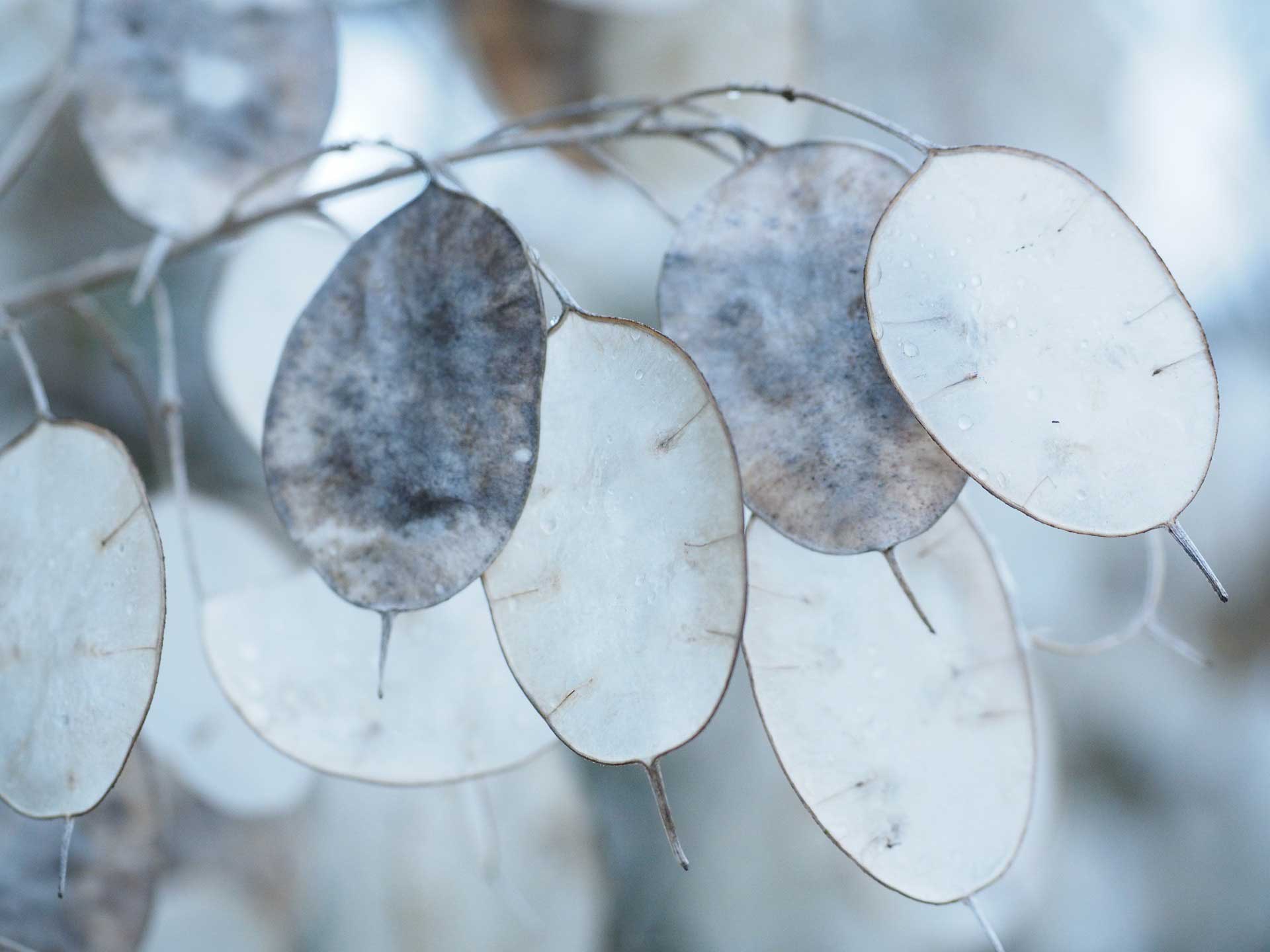
Honesty, Lunaria : sowing, planting, cultivation
Contents
Honesty in a nutshell
- Honesty is a garden classic, valued as much for its flowers as for its translucent, pearly seed pods
- Its flowering, white or mauve, occurs in mid-spring and continues into summer
- Easy to grow, biennial or perennial, it tolerates all soils and exposures, preferring cool, semi-shaded ground
- Adds welcome freshness to beds and borders
- Its transparent seed capsules are indispensable in dried bouquets
A word from our expert
Lunaria, better known as “Honesty”, in reference to its translucent, silvery seed capsules resembling coins, is a classic of cottage and old-fashioned gardens.
Considered a lucky charm for attracting money or warding off bad luck, Honesty is also said to symbolise prosperity!
With its slender silhouette, delicate hues and fruits whose seeds are visible through their translucent membranes, it is indispensable in romantic or naturalistic borders, to which it lends grace and lightness well into winter.
Besides being beautiful and timeless, Honesty has therapeutic properties, being mildly diuretic.
Whether biennial like Lunaria annua or perennial like Lunaria rediviva, all are easy to grow, to maintain and self-seed generously.
Its pearly white seed capsules are highly prized in dried bouquets, which make lovely decorations for the home!
Discover our Lunaria plug plants or our collection of Honesty seeds to brighten the shadiest corners of the garden!
And prepare for spring by browsing our selection of flower seeds!
Description and botany
Botanical data
- Latin name Lunaria
- Family Brassicacées
- Common name Monnaie du Pape, Lunaire, Herbe aux écus
- Flowering d'avril à juillet
- Height 0,45 à 1,50 m
- Exposure Soleil, mi-ombre
- Soil type Tous, bien drainés
- Hardiness -15°C-20°C selon les espèces
La Lunaria plus connue sous le nom de lunaire, “Monnaie du Pape” ou “Herbe aux écus”, appartient à la famille des Brassicacées tout comme les choux. Elle pousse spontanément dans les prairies, terrains vagues et friches d’Europe et d’Asie.
Genus Lunaria comprises three species: Lunaria annua, a biennial (flowers in second year) and its cultivars; Lunaria rediviva, the perennial Money Plant; and Lunaria arboreus, a much less common shrubby species.
In spring, Lunaria forms an attractive upright clump with a bushy habit, typically 0.50 to 0.90 m tall and 0.30 m wide, perennial species sometimes exceeding 1 m in height.
From a sturdy root emerges a rosette of basal leaves from which erect stems rise, branched at the top and villous. Large triangular or cordate (heart-shaped) leaves, 10 to 20 cm long, long-petiolate at the base but sessile near the top, dentate along the edges, follow one another up the stems. Young leaves are edible.
Light to bright green, leaves are variegated and edged with cream-white in some cultivars such as ‘Variegata’. This deciduous foliage dies back in winter.
On this delicate foliage the pretty spring flowering appears. Money Plant produces from mid-spring melliferous flowers that attract butterflies. From April to July small flowers gathered in leafy clusters 10 to 20 cm long at stem tips open. In Lunaria annua, flowering occurs in the second year.
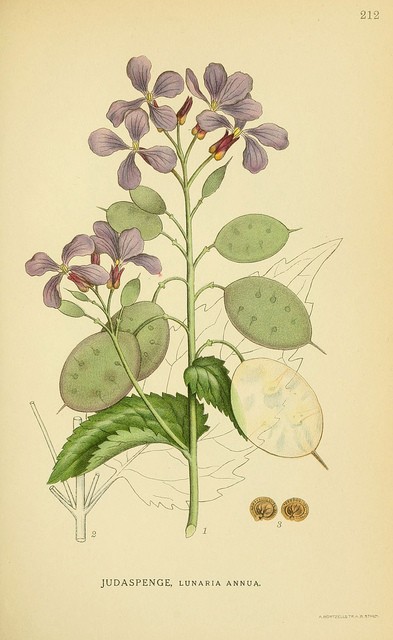
Lunaria annua – botanical illustration
Each flower, 0.5 to 3 cm across, opens with four petals arranged in a cross. Flowers are white, lilac-purple, pink-violet or white shaded with a mauve veil according to variety, and crossed by very fine, darker veins. In the evening they give off a delicate perfume.
While Money Plant is prized for its tender, luminous flowering, it is even more appreciated for its original and highly decorative fruits that follow the flowers and persist through winter. After flowering, the blooms transform into small light-green discs that brown and then become translucent as they dry on the plant.
They then take the form of graceful silvery-white capsules, flat, rounded or oval called siliquae, evoking the lunar disc or silver coins. These transparent, pearly fruits measure 3 to 8 cm across and are formed of two translucent membranes ringed by a thin silvery disk revealing 4 to 5 brown, round seeds. Fruits of Lunaria rediviva are thinner and more elongated.
It is the shape of these parchment-like discs that earned the plant its vernacular name “Money Plant” or “Silver Dollar”. When they split in two, the seeds of Money Plant fall and self-sow.
Once dried, these translucent medallions are spectacular in long-lasting dried bouquets. In the garden, left in place they prolong the decorative effect through the dormant season, also attracting birds that love their seeds.
Hardy to -15°C, easy to grow, Lunaria prefers partial shade and a rather rich, cool, well-drained soil.
With its graceful silhouette and airy flowering, Money Plant is ideal for wild, naturalistic and romantic gardens. It brings a touch of originality and freshness to borders and mixed borders. Its graphic seed inflorescences also enhance gardens in winter.

Lunaria rediviva / Lunaria annua / Lunaria annua var. albiflora ‘Alba Variegata’
Read also
Plant biennials in plug plantsMain species and varieties
Genus Lunaria contains only three species of which the most widespread in gardens is Lunaria annua or biennial honesty, most often grown as an annual, and its cultivars with purple or white flowers or with cream-variegated foliage. Lunaria rediviva is not biennial but a species of perennial honesty. Less frequently encountered is Lunaria arboreus or the large shrubby lunaria, which reaches 1.5 m.
Most popular
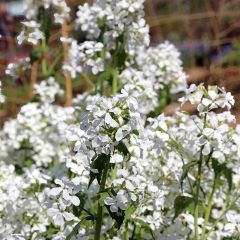
Lunaria annua Alba
- Flowering time June to August
- Height at maturity 80 cm
Our favourites
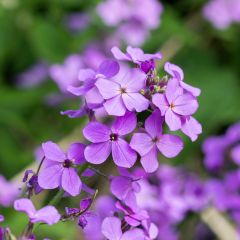
Lunaria annua - Money Plant
- Flowering time June to August
- Height at maturity 1 m
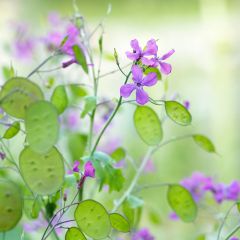
Lunaria annua - Annual Honesty seeds
- Flowering time June, July
- Height at maturity 75 cm
Discover other Lunaria
View all →Available in 2 sizes
Available in 1 sizes
Available in 2 sizes
When and how to sow honesty (Lunaria annua) ?
When and how to harvest honesty seeds
To harvest seeds, open the siliquae when they are completely dry and store them in an airtight box.
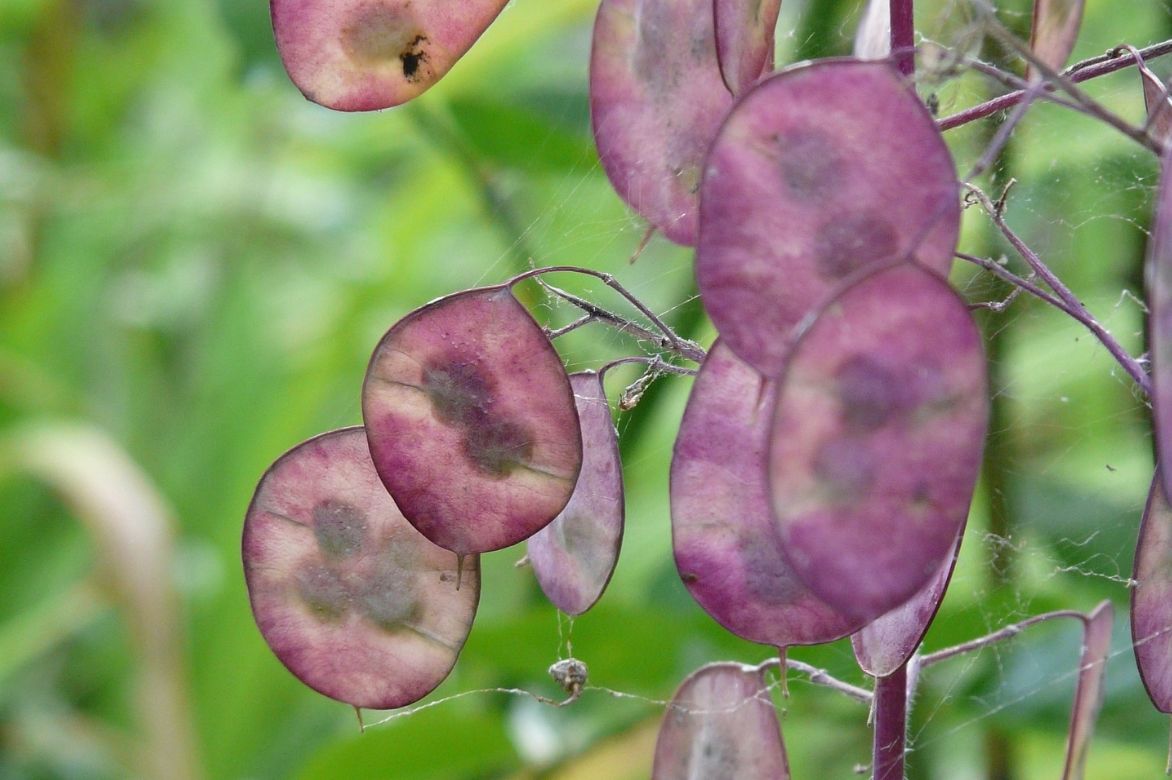
Pods contain famous seeds
When and how to sow honesty seeds?
Two options: sow directly in place in March–April or carry out seed sowing from June to September for flowering in early spring the following year. Use seeds you have harvested in the garden or choose from our annual lunaria seeds and follow our advice to sow them successfully in open ground.
- In well-drained, finely worked and loosened soil, sow seeds broadcast or with a seeder to a depth of 3 mm
- Cover them with finely sieved compost
- Press down lightly
- Keep moist until seedlings emerge (14 to 21 days)
- Thin out young plants to leave one every 30 cm
⇒ Discover everything you need to know to successfully sow honesty.
Planting
Where to plant Honesty?
Very hardy, tolerating temperatures often below -15°C, Honesty can be grown in all regions. It adapts to any soil type but prefers rich, fresh, well-drained and deep soil.
Although it tolerates sun, it favours partial shade and dislikes overly hot sites. It thrives under the dappled cover of large trees as it enjoys woodland atmospheres and cool borders.
Honesty can self-seed and may become invasive; allow some space.
It brings a rustic, romantic touch to natural gardens. Its upright habit lends lightness to summer flower beds or mixed borders.
When to plant?
Planting Honesty from plug plants is done in spring from March to May or in September–October. On receipt, pot on and keep our young plants under cover before placing outside once risk of frost has passed.
How to plant?
In the first year, Lunaria annua, a biennial, will form only a rosette of leaves — do not be surprised: it will flower only in the second year of cultivation. Improve poor soils with some compost. Plant plug plants of Lunaria in groups of 5 to 7 per m² to form a lush, flowering clump in spring.
In open ground
- Dig a hole 2 to 3 times the volume of the rootball
- Fork the soil deeply to loosen compacted ground
- Lay a bed of gravel if needed to improve drainage
- Amend with well-rotted compost
- Place the plug plant and backfill the hole
- Firm down without damaging the young plant
- Water
- Optionally mulch with compost once plants have reached about 30 cm in height to keep soil cool
Want more advice: find our sheet on planting our annuals as plug plants.
Maintenance, pruning and care
Very undemanding, honesty requires little attention. Water during growing season only if soil is very dry.
Add compost in autumn or early spring to support flowering.
After flowering, you may be torn about whether to cut the spent flower stems. Dead heads can be left; they will continue to adorn beds throughout winter. If you want to prevent self-seeding, cut half or even up to three-quarters of the flower stems to limit seed spread and invasive sowing.

Flowering of perennial honesty (Lunaria rediviva)
Potential pests and diseases
In poorly drained soil, Honesty can be affected by the clubroot, a fungal disease responsible for root rot and rapid death of the plant: it appears as swellings or galls at the base of the stem and wilting of the plant.
In warm, humid weather, the foliage may sometimes be affected by powdery mildew, covering the leaves with a white felt-like coating. Spray preventatively with Bordeaux mixture or nettle and horsetail manure and burn affected parts. See our fact sheet to control powdery mildew.
In spring, aphids may invade the plant: wash the foliage with soapy water to dislodge them.
Propagation
You can carry out sowing to multiply clumps of honesty, as it generally self-seeds. If you want to multiply your plants with seeds harvested in late autumn or early spring, store them first for 2 to 3 months in the fridge in an airtight container.
Follow our advice above to ensure successful sowing of honesty seeds.
Pair honesty with other plants in the garden
Honesty (Lunaria) is a familiar feature of parsonage gardens, cottage gardens, naturalistic and romantic gardens, where it fits well into countryside-style borders and sunny or partly shaded natural areas of the garden.
Its flowering ranges from May to July and its soft colours allow the creation of charming, refined displays in white gardens or pink gardens.
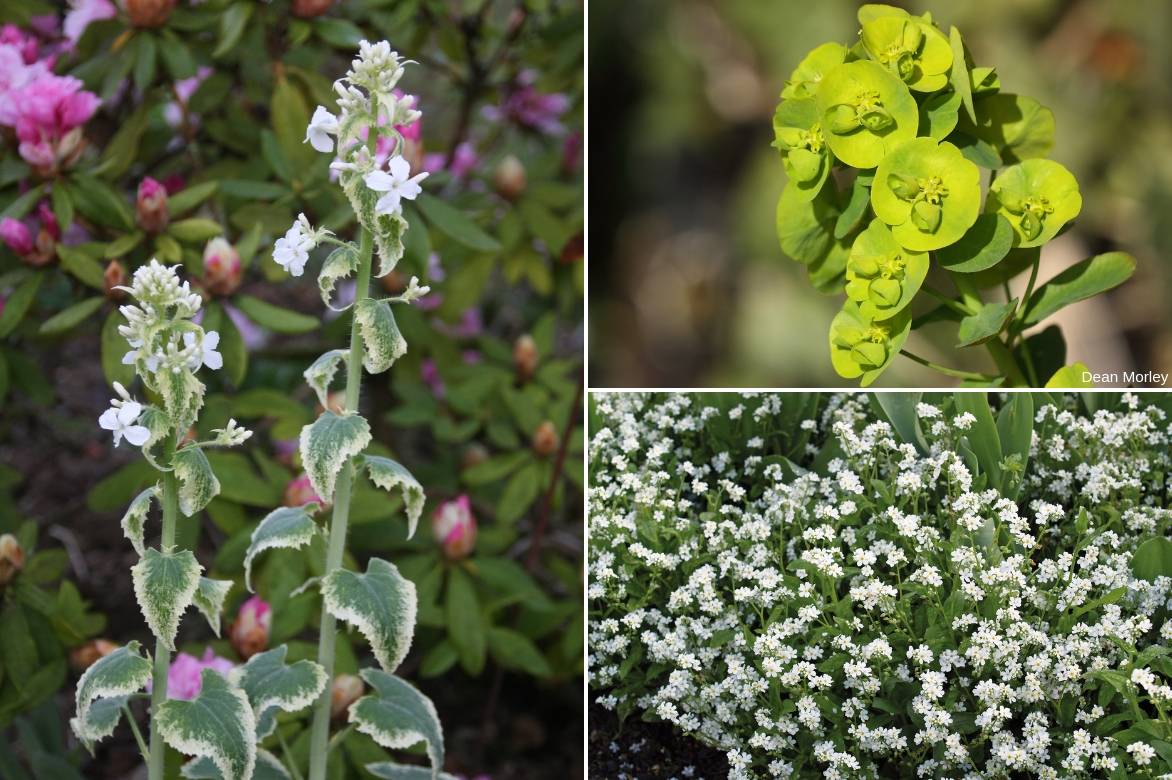
An idea for a white garden pairing: Lunaria annua var. albiflora ‘Alba Variegata’ (or Lunaria annua ‘Alba’, which also flowers white but has non-variegated foliage), Euphorbia amygdaloïdes var. robbiae and Myosotis ‘Snowsylva’
It forms lovely combinations with other late spring flowers such as camassias, comfreys, columbines and with most cool-toned colours or violet-leaved plants such as Heucheras.
At edge of a border, it will work wonderfully alongside hardy geraniums or creeping bugles.
Honesty happily accompanies many other spring bulbs, such as hyacinths, daffodils or muscari, and later bulbs such as Dutch irises and late tulips.
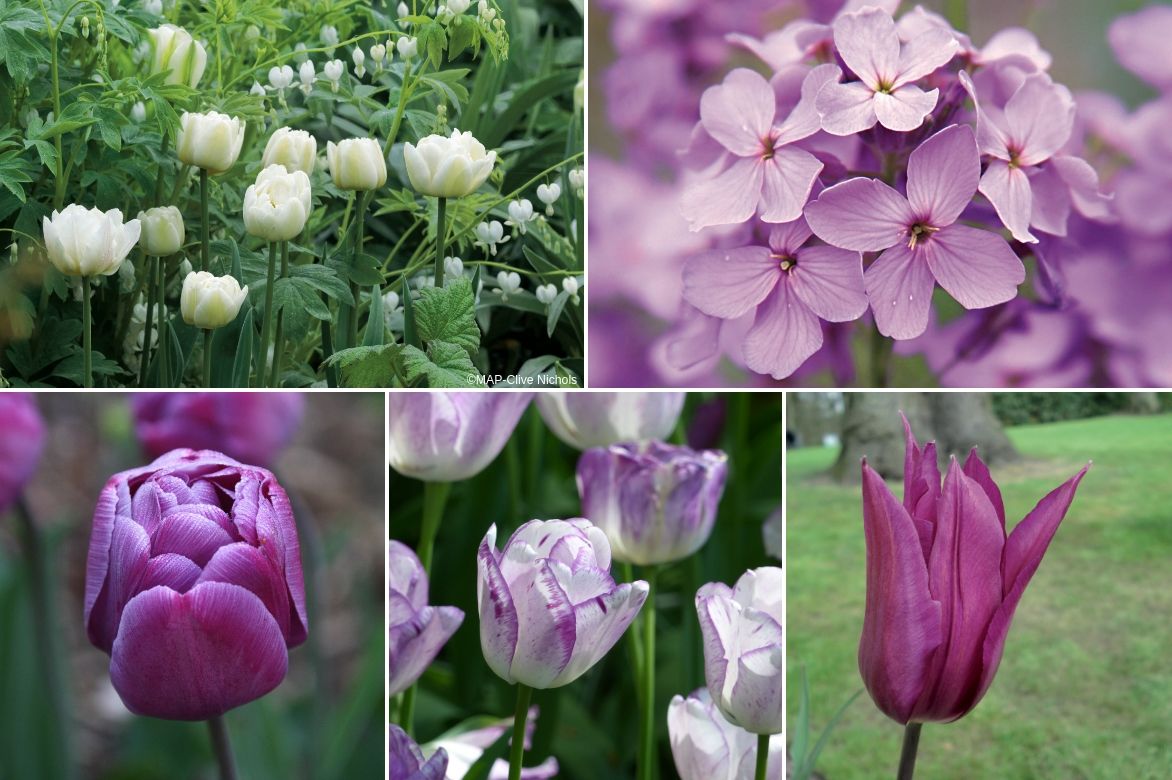
An example of a spring combination: Lunaria annua (photo Alexandre Dulaunoy) and a pretty mix of tulips, ‘Spring Green’, ‘Blue Diamond’, ‘Shirley’ and ‘Burgundy’
In an understorey beneath large deciduous trees or in a shaded border, plant honesty alongside spring-flowering bushes such as Ribes, Persian lilac and perennials such as hostas, bleeding-heart, primroses, epimedium and astrantias.
In a mixed border with romantic hues, it slots between roses and peonies, alliums, love-in-a-mist (Nigella damascena) and cosmos.
Finally, winter-garden enthusiasts can pair the silvery-white seedpods with the red wood of coloured-wood dogwoods. Add some heathers to complete the scene.
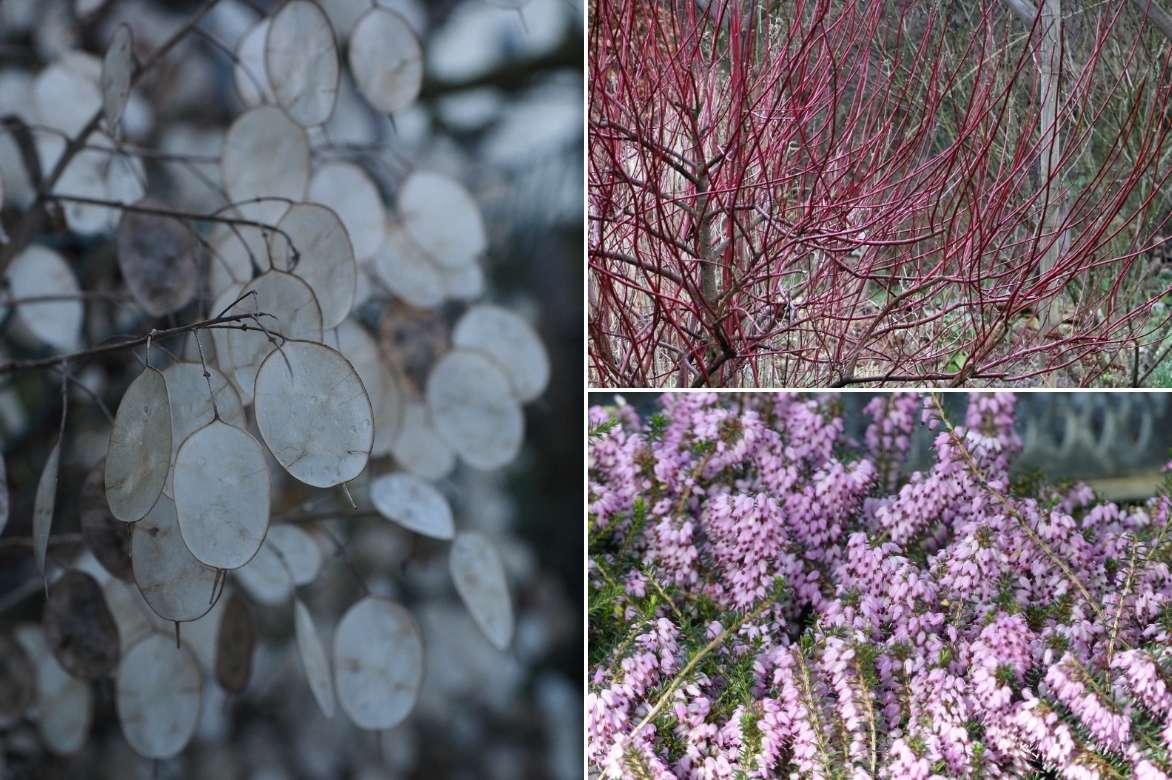
An idea for a winter pairing: Lunaria annua, Cornus alba ‘Sibirica’ and Erica darleyensis ‘December Red
Useful resources
- Imagine a white or pink romantic border where honesty will have its place! massif romantique
- Create charming displays to admire from earliest signs of next spring with new biennial flowers
- Learn more about perennials with decorative fruits
- Subscribe!
- Contents

































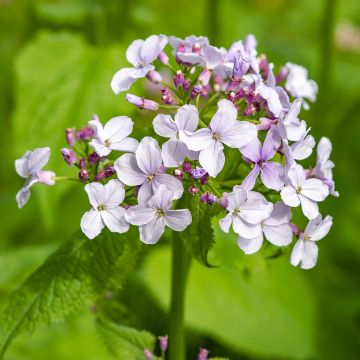

Comments